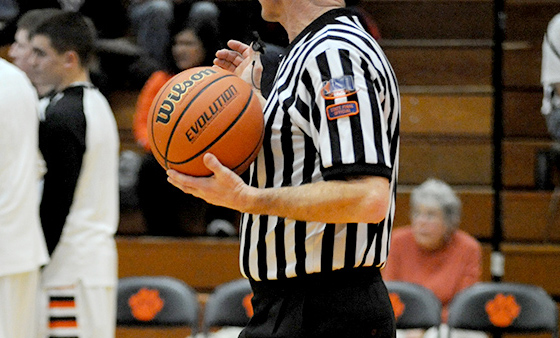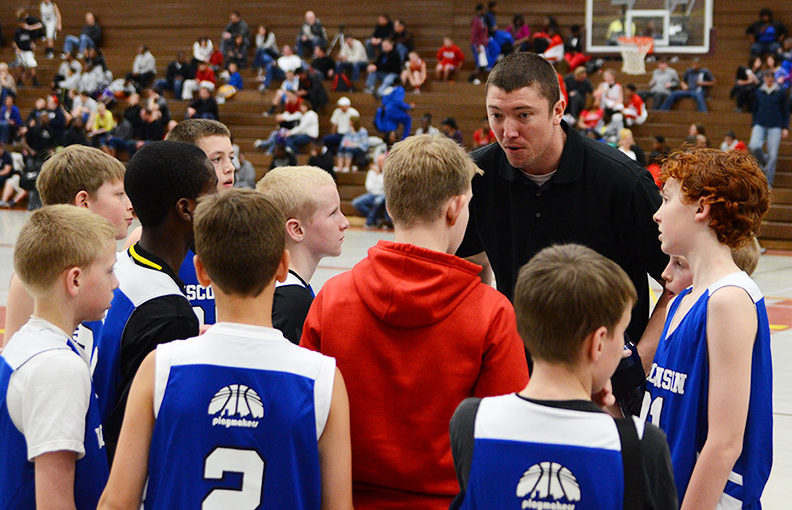Here to stay: Bryan Harsin talks Boise State football
 The coaching bug was planted in Bryan Harsin’s ear during his junior year at Boise State University.
The coaching bug was planted in Bryan Harsin’s ear during his junior year at Boise State University.
Harsin was lending a hand at a local football camp, helping to teach young quarterbacks some of the finer points of playing the position. At the end of the day, a couple of high school coaches who had observed him throughout the camp approached him with a few words of encouragement.
“They said you did a great job, you ought to think about coaching somewhere down the road,” Harsin recalled. “It was really that simple.”Harsin is in his 17th year as a coach, now leading the same Boise State program he played quarterback for from 1995-99. Since taking over the program for the 2014 season, Harsin has compiled a 31-9 record, including going 10-3 in 2016. His record also includes victories in the Fiesta and Poinsettia bowls.
It’s an impressive résumé for a coach who only recently turned 40, and one that wouldn’t have been possible without the mentors who steered him down this path. Most coaches can point to a single moment or person who guided them during their careers, and oftentimes it’s a simple as a pat on the back or a nudge in the right direction.
“I got more encouragement from people in this profession than anywhere else, and that’s probably why I gravitated toward it,” Harsin said. “You never know who’s going to make a difference. A couple words here and there to someone who knows nothing about you, and it might change everything.”
To wind up as the head coach at Boise State was a bit surreal for Harsin. He graduated from Capital High School, just seven miles up the road from the university. Following his college career, he joined the coaching staff at Eastern Oregon before returning to Boise State, becoming part of a staff that included current Washington head coach Chris Petersen.
 Harsin became offensive coordinator in 2007, a season that ended at the Fiesta Bowl against Oklahoma. The game put Harsin’s offensive prowess and fearless play calling on full display, and to this day the people of Idaho still talk about it — two plays in particular.
Harsin became offensive coordinator in 2007, a season that ended at the Fiesta Bowl against Oklahoma. The game put Harsin’s offensive prowess and fearless play calling on full display, and to this day the people of Idaho still talk about it — two plays in particular.
The first came with the Broncos down seven, facing fourth-and-long at midfield with just 18 seconds left in regulation. Quarterback Jared Zabransky completed a pass over the middle to Drisan James who then pitched it to Jerard Rabb, turning the play into a 50-yard score. A perfectly executed hook-and-ladder to force overtime.
Oklahoma began the extra period with a touchdown from running back Adrian Peterson, giving the Sooners a 42-35 lead. The Broncos needed to respond, and after scoring a touchdown on fourth-and-two, Boise State decided to go for a two-point conversion and the win.
Zabransky dropped back and faked a pass to the right, all the while hiding the ball in his left hand near his hip. With the defense selling out to the wrong side of the field, Zabransky handed the ball to Ian Johnson, who ran untouched into the end zone. (See video below.)
The Sooners never stood a chance.
“(I hear) talk about the play calling, and I get it, but the thing about that game is the players,” Harsin said. “Those guys executing all those plays to perfection, that’s the most impressive thing to me. They were in a stressful situation in the biggest game of their lives, and they’re executing it better than we did in practice.”
Sports Illustrated recently named the 2007 Fiesta Bowl the third best college football game of all time, and it still resonates throughout Idaho. Boise State’s football facilities were upgraded, a credit to the historic game, and the Broncos captured the attention of college football fans nationwide.
Nowhere is that effect felt more than Boise. Todd Simis has been a prep head football coach in the city for the last 19 years, 13 at Harsin’s alma mater of Capital High School. The Fiesta Bowl is still a conversation piece among the locals, and because Idaho doesn’t have a professional sports team, college football Saturdays have become a celebration.
“From (2007) and after with the campus and the facilities, you could see that put Boise State on the map,” Simis said. “I think in any way, shape or form, you can trace a bunch of that back to that football game.”
Coaching nearly two decades in southwestern Idaho, Simis has his thumb on the pulse of Boise State’s program. He occasionally talks football with Harsin or observes practices, and he believes a lot of the Broncos success can be traced back the culture.
Harsin’s practices are ultra-efficient, transitioning from one drill to the next with almost no wasted time. All coaches are encouraged to provide input on how the program can be improved, and organization is a top priority. It’s a foundation that was built during Petersen’s time a Boise State, and Harsin has continued to carry the torch.
“It’s a culture of cooperation and teamwork,” Simis said. “They believe in the system because it has worked for so many years, and the players are buying in.”
Harsin considers himself a player’s coach, cognizant of how he can build players on and off the field. But in addition to developing athletes, he’s committed to doing the same with his coaches, using unique techniques to help refine their approaches.
One of his favorites is filming coaching sessions, not only to study the players but to allow coaches to observe themselves. Harsin has used the practice to identify how he can better engage and connect with his players, and it has made a difference.
“We all do things differently, but I would pay a tremendous amount of money just to sit in on another coaches meeting and listen to them and learn about how they teach,” Harsin said. “Sometimes the best professional development is your own staff because you guys have the same type of ideas and you can learn different ways of teaching it.”
It’s all part of Harsin’s fight against complacency, a legitimate concern for a football program that hasn’t suffered a losing season in 19 years — the third longest streak in Division I. During that time, the Broncos have won 11 of their 16 bowl games and clinched a dozen conference championships.
Harsin said he grows wiser with each passing season, learning that regardless of what happens on the field there’s always more to learn as a college coach. He has come a long way since mentoring kids at football camps more than 15 years ago, but he’s far from finished.
“I think the more you learn the more fun it is because you see how much you don’t know,” Harsin said. “When you get a taste of learning, then you try to master it and it becomes a chase. Chasing that mastery is what drives myself and a lot of guys in this program each day at every practice and every game.”





